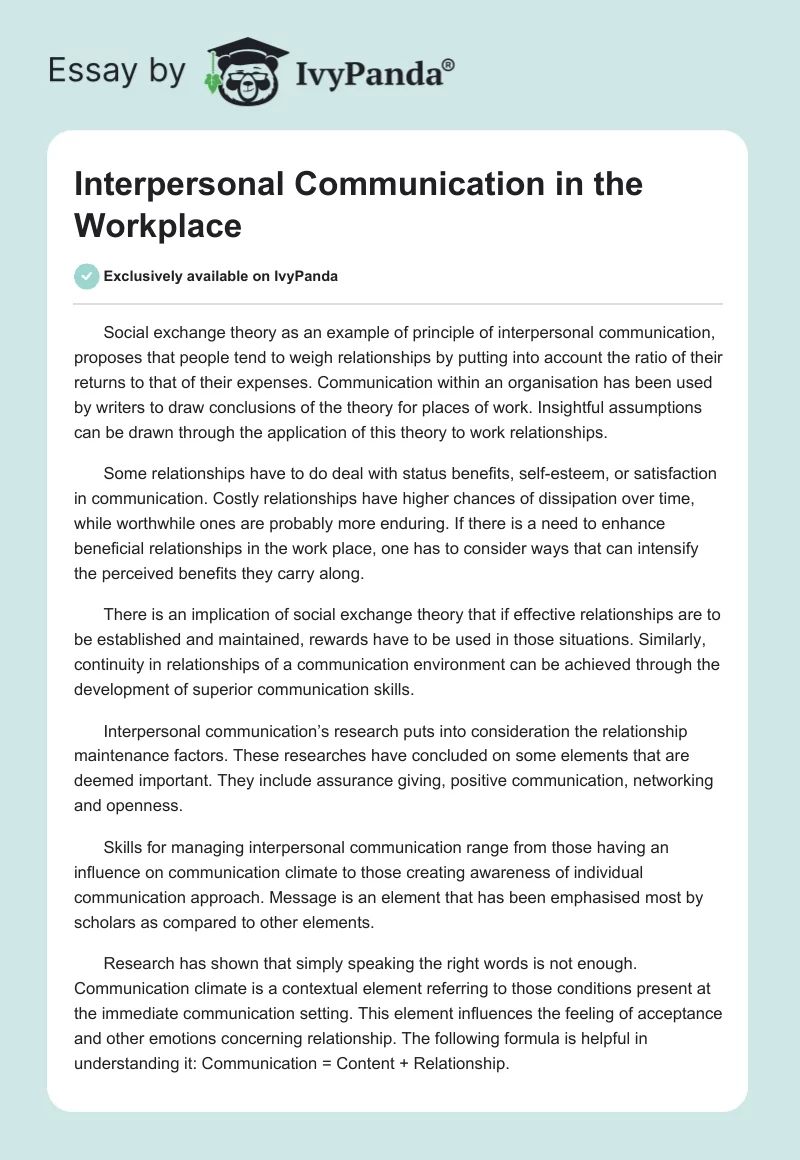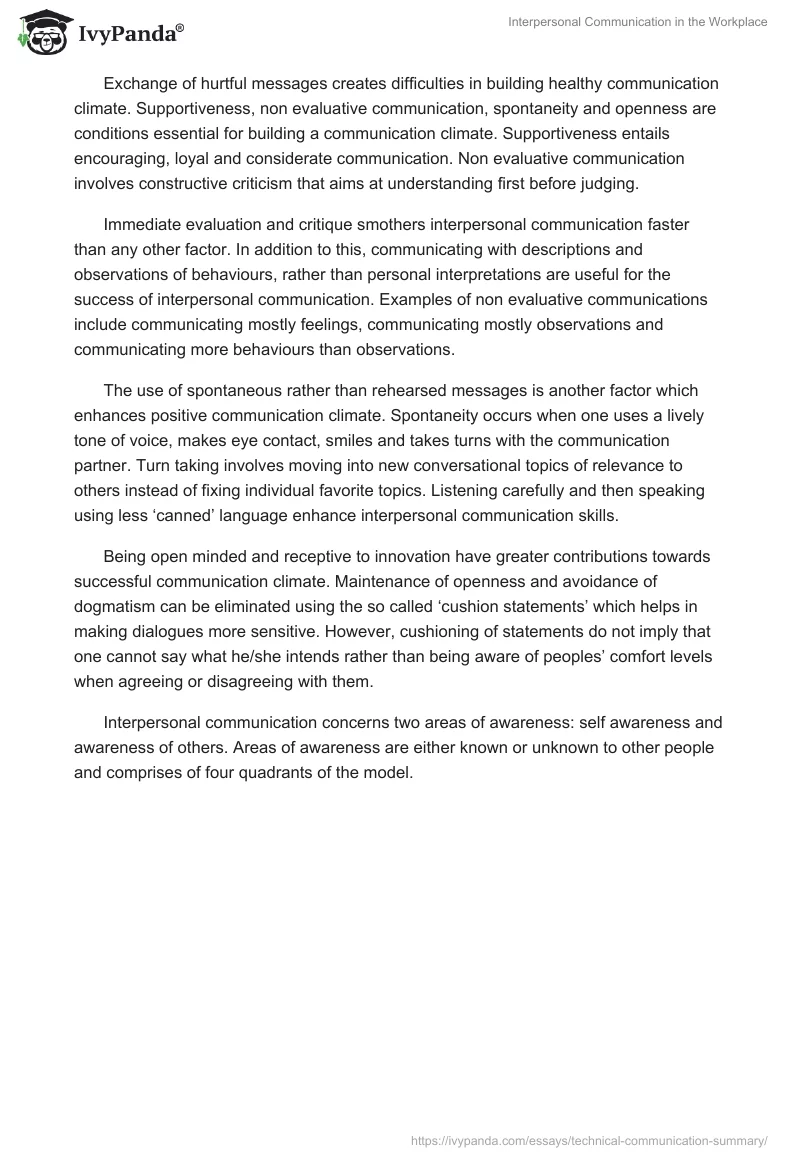Social exchange theory as an example of principle of interpersonal communication, proposes that people tend to weigh relationships by putting into account the ratio of their returns to that of their expenses. Communication within an organisation has been used by writers to draw conclusions of the theory for places of work. Insightful assumptions can be drawn through the application of this theory to work relationships.
Some relationships have to do deal with status benefits, self-esteem, or satisfaction in communication. Costly relationships have higher chances of dissipation over time, while worthwhile ones are probably more enduring. If there is a need to enhance beneficial relationships in the work place, one has to consider ways that can intensify the perceived benefits they carry along.
There is an implication of social exchange theory that if effective relationships are to be established and maintained, rewards have to be used in those situations. Similarly, continuity in relationships of a communication environment can be achieved through the development of superior communication skills.
Interpersonal communication’s research puts into consideration the relationship maintenance factors. These researches have concluded on some elements that are deemed important. They include assurance giving, positive communication, networking and openness.
Skills for managing interpersonal communication range from those having an influence on communication climate to those creating awareness of individual communication approach. Message is an element that has been emphasised most by scholars as compared to other elements.
Research has shown that simply speaking the right words is not enough. Communication climate is a contextual element referring to those conditions present at the immediate communication setting. This element influences the feeling of acceptance and other emotions concerning relationship. The following formula is helpful in understanding it: Communication = Content + Relationship.
Exchange of hurtful messages creates difficulties in building healthy communication climate. Supportiveness, non evaluative communication, spontaneity and openness are conditions essential for building a communication climate. Supportiveness entails encouraging, loyal and considerate communication. Non evaluative communication involves constructive criticism that aims at understanding first before judging.
Immediate evaluation and critique smothers interpersonal communication faster than any other factor. In addition to this, communicating with descriptions and observations of behaviours, rather than personal interpretations are useful for the success of interpersonal communication. Examples of non evaluative communications include communicating mostly feelings, communicating mostly observations and communicating more behaviours than observations.
The use of spontaneous rather than rehearsed messages is another factor which enhances positive communication climate. Spontaneity occurs when one uses a lively tone of voice, makes eye contact, smiles and takes turns with the communication partner. Turn taking involves moving into new conversational topics of relevance to others instead of fixing individual favorite topics. Listening carefully and then speaking using less ‘canned’ language enhance interpersonal communication skills.
Being open minded and receptive to innovation have greater contributions towards successful communication climate. Maintenance of openness and avoidance of dogmatism can be eliminated using the so called ‘cushion statements’ which helps in making dialogues more sensitive. However, cushioning of statements do not imply that one cannot say what he/she intends rather than being aware of peoples’ comfort levels when agreeing or disagreeing with them.
Interpersonal communication concerns two areas of awareness: self awareness and awareness of others. Areas of awareness are either known or unknown to other people and comprises of four quadrants of the model.


